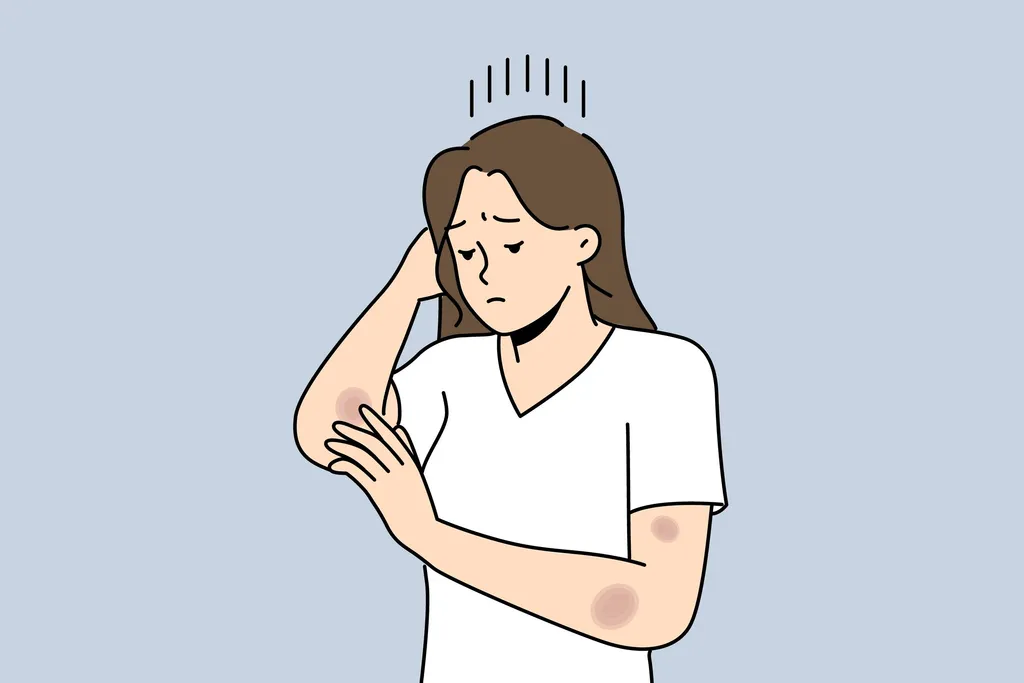Bruising
What is Bruising?
Bruising happens when small blood vessels under the skin break, causing blood to leak into the surrounding tissues and creating visible discoloration. At first, a bruise may appear red, turn blue or dark purple, and eventually yellow or green as the body reabsorbs the blood.
Bruising typically results from an injury, like a fall. However, in people with CLL, bruising can occur more frequently and without injury due to the cancer and its treatments. These bruises may appear in unusual places, such as on the back, legs, or hands.
If you take a BTK inhibitor for CLL, bruising is a common side effect because the medication interferes with your platelets' ability to stop bleeding.

How is CLL-Related Bruising Managed?
To manage bruising, your doctor will monitor your platelet levels and may recommend a platelet transfusion if they are low. This procedure involves infusing donor platelets into your bloodstream to help with clotting.
At home, you can manage bruising by applying ice packs for the first 48 hours, using warm compresses after two days, elevating the bruised area, and taking non-blood-thinning pain relievers like Tylenol, as advised by your healthcare team.
Contact your healthcare provider if you experience unexplained bruising, bruises lasting longer than two weeks, frequent large bruises, a lump in the bruised area, or painful swelling, as these could indicate complications. Maintaining open communication with your doctor is crucial for managing bruising and adjusting your CLL treatment plan as needed.
If you would like to learn more about bruising and how to manage it, read the following article: Side Effect Management and Bruising